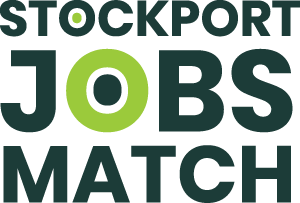Next Steps Checklist
Whether you’re planning to continue with your studies on a part-time or full-time basis, pursue an academic or vocational study path, head off to higher education or start employment, there are lots of different options to consider at 16+ and 18+. Use our Next Steps Checklist to get started.
Having lots of choices to make – from what to study to where to study it – can feel overwhelming. To break down things down into manageable chunks, it helps to set out your decision-making criteria. Identify what is most important to you when making that next-step decision. Is it the course itself, including the resources and facilities available? Is it the training provider/college/uni, including the location, cost, facilities and accessibility? Does it depend solely on the entry requirements, the progression routes, grade averages or simply your first impression or where your peers are studying?
We all make decisions in different ways based on what matters most to us. So before you head off to an open day, it’s important to set out your priorities and do some initial research on each potential place or type of study or work. Use our ‘Next Steps Checklist’ worksheet to help you consider your decision before, during and after your visit.
How to use
Choose 3 Options
You can use the checklist to compare 3 options for your future. These could be a college, sixth form, university, training provider, apprenticeship provider, employer or a mix.
Start by selecting three options (A, B and C) and write these into each of the rows and columns on page one.
If you’re due to finish secondary school, you can use our Digital Prospectus to look at the local providers for further education when you turn 16. If you’re due to finish college or sixth form, you should visit the UCAS website to look at Universities or Higher Education Colleges. If you’re looking for apprenticeships, you can search the various ‘standards’ or course types available on apprenticeships.gov.uk or browse current opportunities on sites like GetMyFirstJob.

Before you go
Before you attend an open day, careers event or job fair, start by doing some initial research online. For each of your 3 options, find out:
- How to get there and how much it will cost
- What qualifications and course they offer
- The entry requirements and how to apply
- What other information is available on their websites or other sources
Rank each of your 3 options out of 10 for each factor and add up their total score (out of 50). At the top of the ‘Before you go!’ column, write down which scored the highest (best option) and which scored the lowest.
Whilst you’re there
During the open day itself, you will have the opportunity to tour the facilities, speak to tutors and other students, find out about the equipment and resources available, as well as the support services and extra curricular activities. Think about which of these might be most important to you. After you have visited each provider, give them a score (out of 10) for how you rate your visit according to:
- Course entry requirements
- Campus facilities
- Support Services
- Student feedback
- Extra Curricular activities
Add up the score (out of 50) and at the top of the ‘Whilst you’re there!’ column, write down which scored the highest (best option) and which scored the lowest.
After you’ve been
After you’ve attended an open day, you should have more information (often from a presentation on the day or prospectus you were given) about what each provider has to offer and what makes them a great option. Use the final column to assess each place of study according to the following criteria and complete the final scoring to see which comes out on top!
- Course pass rates or average grades
- Tuition/course fees or any associated costs to you (such as transport or text books)
- Accommodation fees (if you need to move away from home)
- Progression rates (how likely you are to progress to the next step after studying here based on other leavers’ outcomes)
- Alumni network (are there support services for finding work afterwards or career mentors available?)
If you prefer, you can add your own selection criteria based on what’s important to you.
Next Steps Comparison
Next you can use Sheets 2, 3 or 4 to compare your post-16 academic or vocational choices, or your options at 18+ for university, higher education or employment.
Write down the place of study and potential course subjects. Use the boxes below to add in the pros and cons of each and refine your decision. Mark off which is your preferred option (using the Yes/No) boxes to select which route will best help you achieve your career goal.



